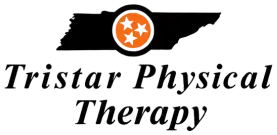Table of Contents
- Understanding Rotator Cuff Injuries
- Rotator Cuff Stretches for Rehabilitation
- Rotator Cuff Exercises for Rehabilitation
- Recovery and Timeframe
If you have experienced a rotator cuff injury, you may be hopeful to avoid the need for surgery. The good news is that if your tear is not complete, there is a high chance that you can rehabilitate your shoulder using nonsurgical options, such as steroid injections and physical therapy. In fact, it is estimated that about 80 percent of individuals with partial tears can regain function and reduce pain without undergoing surgery.
Understanding Rotator Cuff Injuries
The rotator cuff is a group of muscles and tendons that work together to keep the upper arm bone properly positioned within the shoulder socket. These muscles also assist in lifting the arms away from the body. When there is a complete tear in the rotator cuff, it becomes extremely difficult to move the affected arm.
Rotator cuff injuries typically occur due to two main reasons. The first is through sudden overextension caused by a traumatic event, such as a fall that may also result in a broken collarbone or dislocated shoulder. The second is a more gradual condition that develops over time due to a combination of aging and repetitive shoulder movements. Individuals who have professions or engage in activities that require repetitive shoulder motions, such as carpenters, mechanics, painters, and athletes who play baseball, softball, or tennis, are particularly prone to these types of injuries.
Rotator Cuff Stretches for Rehabilitation
When it comes to physical therapy for rotator cuff injuries, one of the initial goals is to improve posture, as it can significantly contribute to these injuries. There are several recommended stretches that can aid in this process:
- Doorway Stretch: Stand in a doorway and grip both sides of the frame at or below shoulder height. Lean forward through the doorway until you feel a slight stretch in the front of your shoulder. Keep your back straight and shift your weight onto your toes.
- Over-the-Head Stretch: Lie flat on the floor or a bed and hold a cane or rod in both hands, placing it at your hips. Slowly raise the rod in an arc above your head, keeping your arms straight until you feel a stretch.
- Up-the-Back Stretch: Stand with your arms at your side, holding a rod or cane in both hands behind your back. Slowly raise the rod up your back, bending your elbows until you feel a slight discomfort.
Rotator Cuff Exercises for Rehabilitation
Rehabilitation exercise plans vary from person to person based on risk factors and the severity of the injury. In some cases, starting with isometric exercises that strengthen the damaged area without movement may be recommended. Isotonic exercises using resistance bands may be the next step in the rehabilitation process. Here are some exercises that may be included in a tailored exercise plan:
- Isometric Shoulder Flexion: Stand facing a wall and bend the elbow of the injured shoulder with your hand in a fist. Place a folded towel between your fist and the wall, then press your fist into the wall for five seconds.
- Isometric Shoulder Abduction: Stand perpendicular to a wall, keeping your injured shoulder about six inches away from it. Press your fist into the wall as if you are trying to raise your arm to the side and hold it for five seconds.
- Isometric Shoulder Internal Rotation: Stand in a doorframe facing a wall and bend the elbow of the injured shoulder with your hand in a fist. Place a folded towel between your inner forearm and the wall, then rotate your forearm inward into the wall for five seconds.
- Isometric Shoulder External Rotation: Stand in a doorframe facing a wall and bend the elbow of the injured shoulder with your hand in a fist. Put a folded towel between your outer forearm and the wall, then rotate your forearm outward into the wall for five seconds.
- High-to-Low Rows: Attach a resistance band to a stationary object at or above shoulder height. Kneel down, with the knee on the same side as your injured arm resting on the ground. Rest your other hand on the raised knee. Hold the band in your injured arm and pull your elbow toward your body, keeping your back straight and squeezing your shoulder blades together and down.
- Reverse Fly: Stand with your feet shoulder-width apart and knees slightly bent. Bend forward slightly at the waist while keeping your back straight. Hold a light weight in each hand and extend your arms, raising them away from your body without locking your elbows. Avoid raising your arms above shoulder height.
- V Arm Raise: Start in a standing position and extend your arms forward, bringing your hands together with thumbs pointed up. Slowly raise your arms to the ceiling, maintaining the V shape. As you progress, you can add a pound or two of weight.
It is important to start rehabilitation exercises gradually and avoid any movements that cause significant pain. Additionally, be cautious of activities outside of exercise that may further damage your shoulder, such as reaching behind you in a car or engaging in repetitive overhead motions like painting a room.
Recovery and Timeframe
Recovering from a rotator cuff tear is a process that requires time and patience. The duration of rehabilitation varies depending on the severity of the injury. Mild tears may only require a month of rehab, while more serious injuries can take anywhere from six months to a year to fully recover.
In conclusion, if you have suffered a rotator cuff injury, there is hope for rehabilitation without the need for surgery. Nonsurgical options, such as steroid injections and physical therapy, can help you regain function and reduce pain. By following a tailored exercise plan and incorporating stretching, you can aid in the healing process and improve your shoulder’s strength and mobility. Remember to consult with a physical therapist to create an individualized plan that suits your needs and always listen to your body to avoid further injury. With dedication and proper care, you can get back to an active and pain-free lifestyle.
For more information about rotator cuff physical therapy, visit Tristar Physical Therapy.

